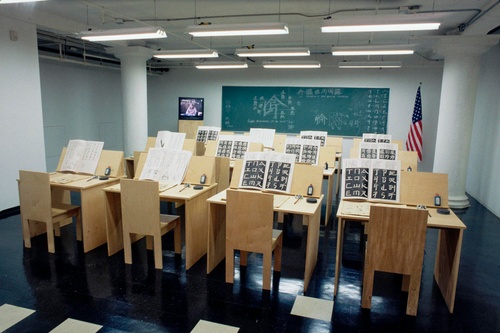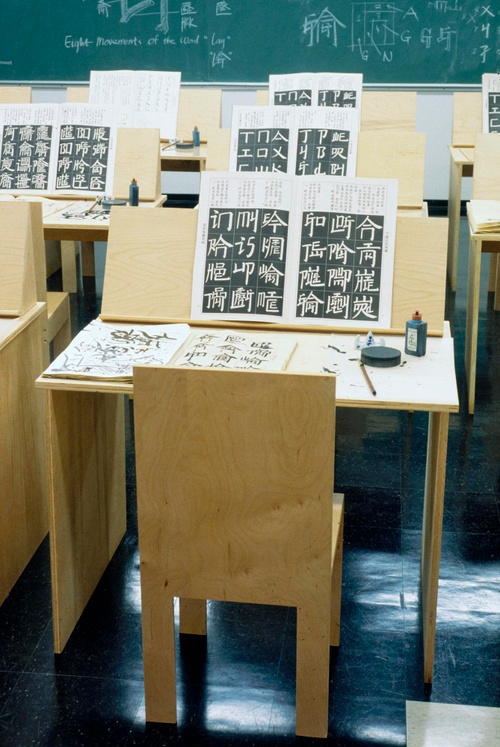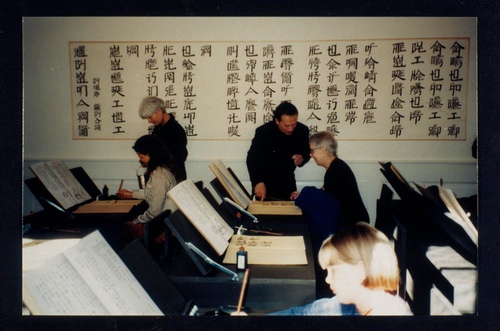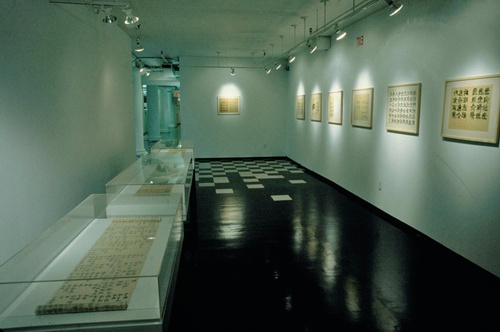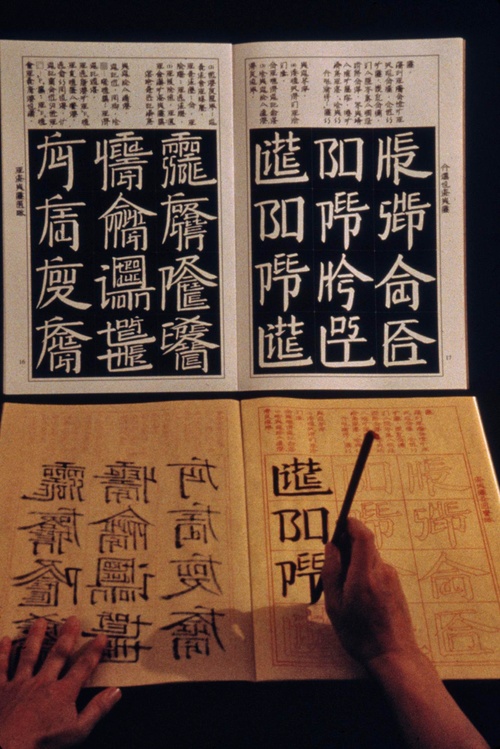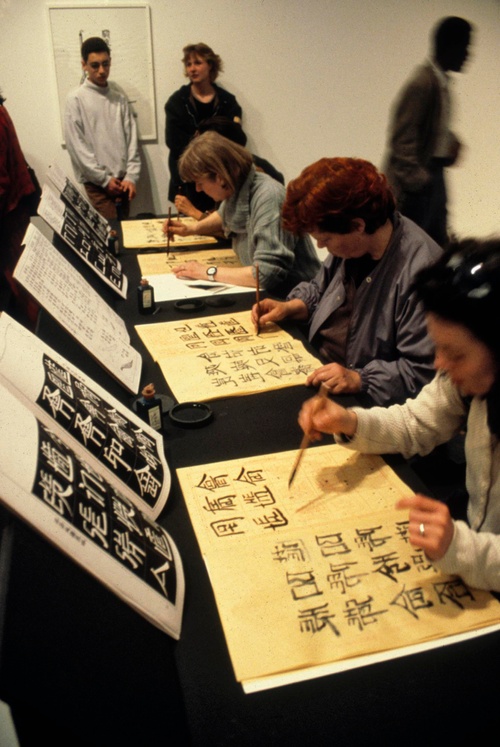Xu Bing: Introduction to Square Word Calligraphy
Xu Bing: Introduction to Square Word Calligraphy
Introduction to New English Calligraphy is the Chinese-born artist Xu Bing’s most elaborate treatment to date of a traditional expression of his native culture, which he infuses with the rootless, nomadic sensibility found at the core of postmodern, globalist identity. The New Museum’s Public Access gallery space has been transformed into a classroom, an obviously appropriate setting for learning the venerable Chinese art of calligraphy. Each one of a number of tables accommodates an exercise book, practice sheets, brushes, and ink. On the walls, a series of graceful calligraphic designs provides a backdrop to an instructional video. Viewers are invited to sit down and learn rudimentary strokes, which are explained in the exercise book through a series of colorful metaphors, some poetic and others childlike in their simplicity. The “student” goes on to build individual strokes into more complex forms, closely resembling Chinese characters.
But at some point during the lesson, visitors begin to realize that instead of Chinese characters, they are constructing English words from these stylized, box-shaped marks. The feeling of being engaged in an esoteric practice evaporates, as the idea that the meaning of Chinese characters can be grasped through a short-cut training session rather than years of study is exposed as a fantasy rooted in a cultural attitude. For participants who read Chinese, a system of language masquerading as one’s own and adapted to Western modes of thought and communication raises other issues of appropriation, displacement and Western dominance. On the other hand, the use of time-honored techniques to teach people a new way to write in English might be taken as an homage to a venerated tradition. But by adding a subtext, that of the non-Chinese world’s growing awareness of all manifestations of Chinese culture, both assumptions of cultural superiority are pitted, however fancifully, against each other.
Xu Bing was born in 1955 in Chungqing, in Sichuan province. He studied traditional bookbinding and calligraphy at the Beijing Academy of Fine Arts, and left China shortly after the Tiananmen Square massacre in 1989. A leading member of a generation of expatriate Chinese artists based mainly in Paris and New York, Xu has worked primarily in the area of written language. He first gained international attention with the installation Book from the Sky (1987-91). It consisted of more than 200 hand-printed, hand-bound volumes of a single “book” containing thousands of separate pages, each filled with writing that resembled Chinese, but was really of his own invention. Only viewers who could read Chinese were able to fully appreciate the fact that the impressive array of language before them was really meaningless.
Xu Bing’s neo-Dada sensibility helped shape A Case Study of Transference, first performed in Beijing in 1994. The artist recruited a pair of breeding pigs, then covered the female with Chinese characters and the male with Roman letters. While an audience watched, the two pigs were ushered into the book-covered floor of a pen, where they proceeded to mate. In Opening (1998), a recent work at the Center for Curatorial Studies, Bard College the artist planted a small mulberry tree in a pot on a pedestal, then covered it with live silkworms. Over the next two weeks, the silkworms slowly consumed the mulberry leaves and formed cocoons; by the end of the exhibit the last silkworm, immobilized in the last cocoon, had eaten the last leaf. By challenging the venerated Chinese tradition of sericulture through the rules of time-based performance art, Xu collapsed a vast and ancient practice into a spectacle of nature framed by aesthetics.
In Introduction to New English Calligraphy and other works, Xu mocks certain intellectual underpinnings of contemporary global society, particularly those notions of cultural authenticity which are rooted in the West’s projections onto Asia. As Xu demonstrates, the idea that the vast differences between Chinese and English culture can be reduced to a single, user-friendly exercise of form is absurd. But at the same time, his work symbolizes the fact that a genuinely pluralist, ongoing intercultural exchange cannot be realized until all parties recognize the enormous obstacles to this goal, in the face of which mistranslations are inevitable.
-Dan Cameron, Senior Curator
